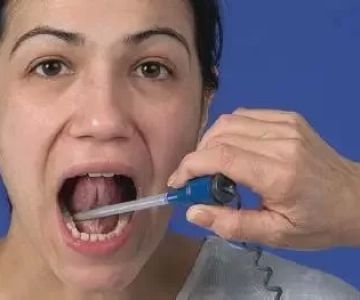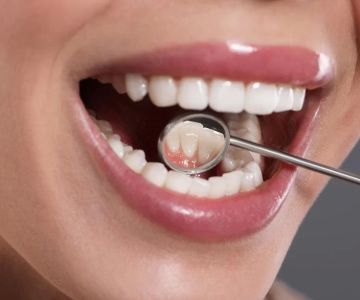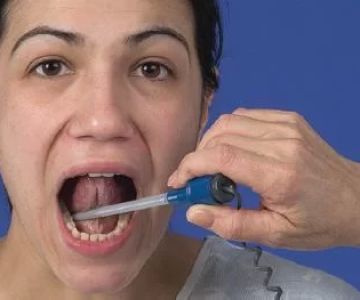Why Accuracy Matters When Using an Oral Thermometer
Oral thermometers are a staple in American households for quickly assessing body temperature, especially when monitoring illness or fever. However, an inaccurate reading can lead to confusion, delayed treatment, or unnecessary worry. Ensuring that your oral thermometer provides precise measurements is crucial for making informed health decisions.
Many people assume thermometers are always accurate, but various factors can influence their readings. These include the quality of the device, user technique, environmental conditions, and even calibration. Knowing how to check the accuracy of your oral thermometer empowers you to trust your readings and use them effectively.
Understanding How Oral Thermometers Work
Before diving into accuracy checks, it's helpful to understand how oral thermometers measure temperature. Most oral thermometers use electronic sensors to detect the heat inside the mouth, usually under the tongue. The device then converts this heat into a temperature reading displayed digitally.
Because the mouth is a warm, moist environment, the thermometer must be properly positioned and used consistently to capture an accurate measurement. Even slight changes in placement or timing can affect the result. This sensitivity is why verifying accuracy regularly is essential.
Practical Methods to Check Oral Thermometer Accuracy
1. The Ice Water Test
One simple and effective method to check your oral thermometer’s accuracy is the ice water test. Fill a glass with ice and add cold water, stirring well to create a mixture at approximately 32°F (0°C). Place the thermometer tip in the ice water for at least 30 seconds, ensuring it does not touch the container’s sides or bottom.
The thermometer should read close to 32°F. A slight variation within 1°F is generally acceptable, but larger deviations indicate your device may need recalibration or replacement. This test is easy to perform at home and gives a quick snapshot of how well your thermometer is functioning.
2. The Body Temperature Comparison
Another method is to compare the oral thermometer reading with another trusted thermometer, such as an ear or temporal thermometer. Take multiple temperature readings from the same person in a short timeframe, using each device. Consistent readings within a small range (usually 0.5°F) suggest your oral thermometer is accurate.
This approach is especially helpful if you recently bought a new thermometer and want to confirm it matches your previous trusted device.
3. Calibration by Manufacturer’s Instructions
Some advanced digital oral thermometers allow calibration or resetting. Consult your thermometer’s user manual to see if this is an option. Following the manufacturer’s procedure for calibration can restore accuracy and prolong the device’s lifespan.
If your thermometer does not have calibration features, it may still be possible to identify faults early by regular testing as described above.
Common Factors That Affect Oral Thermometer Accuracy
Several everyday factors can skew the readings of your oral thermometer. Awareness of these helps avoid mistakes:
- Eating, Drinking, or Smoking Before Measurement: Consuming hot or cold beverages or smoking can temporarily alter mouth temperature. It’s recommended to wait at least 15 minutes before measuring.
- Incorrect Placement: The thermometer tip should be placed under the tongue, towards the back of the mouth, for consistent readings.
- Talking or Breathing Through the Mouth: This can cool the sensor and cause inaccurate results.
- Device Quality and Age: Older or cheaper thermometers may lose accuracy over time or lack precision.
By controlling these factors, you can improve the reliability of your oral thermometer’s readings.
Stories from Users: When Accuracy Changed the Outcome
Take the experience of Mark, a father in Ohio, who relied on an oral thermometer to monitor his daughter’s fever during flu season. One evening, he noticed the readings seemed unusually low despite her discomfort. Suspecting an issue, Mark performed the ice water test and discovered the thermometer was off by nearly 3°F. After replacing the device, he was able to better assess when to seek medical help, illustrating how accuracy can directly impact care decisions.
Similarly, Julia, a nurse in California, advises her patients to regularly check their home thermometers because “small inaccuracies can lead to missed warnings or unnecessary ER visits.” Her professional insight underscores the importance of validation and proper use.
Tips to Maintain and Maximize Your Oral Thermometer’s Accuracy
Keeping your oral thermometer accurate is an ongoing process. Follow these tips for best results:
- Store your thermometer properly to avoid damage from heat or moisture.
- Clean the sensor tip before and after each use with alcohol wipes.
- Replace batteries regularly to ensure consistent device performance.
- Perform periodic accuracy checks with the ice water test.
- Follow manufacturer’s care instructions closely.
Routine maintenance combined with accuracy testing helps extend your thermometer’s usefulness and reliability.
When to Replace Your Oral Thermometer
If repeated accuracy tests reveal significant deviations or the device shows signs of damage, it’s time to replace your oral thermometer. Modern digital models are affordable, widely available in American pharmacies and online, and often include features like faster readings and memory recall.
Investing in a reliable thermometer provides peace of mind and helps ensure your health monitoring remains trustworthy.
Where to Find Reliable Oral Thermometers and Further Guidance
For those seeking trustworthy thermometers or additional health advice, visiting a reputable resource like Dentistry Toothtruth can be invaluable. They offer expert recommendations on medical devices and tips to maintain your health monitoring tools effectively.







 Aspen Dental4.0 (503 review)
Aspen Dental4.0 (503 review) Apple Tree Dental Mounds View4.0 (611 review)
Apple Tree Dental Mounds View4.0 (611 review) Green River Family Dentistry5.0 (63 review)
Green River Family Dentistry5.0 (63 review) Aspen Dental - Mechanicsville, VA3.0 (396 review)
Aspen Dental - Mechanicsville, VA3.0 (396 review) Tompkins Family Dental Group4.0 (73 review)
Tompkins Family Dental Group4.0 (73 review) Lakes Orthodontics4.0 (250 review)
Lakes Orthodontics4.0 (250 review) The Importance of Oral Health Education During Pregnancy for a Healthy Pregnancy
The Importance of Oral Health Education During Pregnancy for a Healthy Pregnancy Best Tips for Brushing Your Teeth Properly for Healthy Gums: Essential Techniques for Oral Health
Best Tips for Brushing Your Teeth Properly for Healthy Gums: Essential Techniques for Oral Health Why Skipping Dental Checkups Can Lead to Bigger Oral Health Problems
Why Skipping Dental Checkups Can Lead to Bigger Oral Health Problems Advantages of Porcelain Dental Restorations
Advantages of Porcelain Dental Restorations How Can Diabetes Cause Tooth and Gum Problems? Preventing and Managing Oral Health Issues
How Can Diabetes Cause Tooth and Gum Problems? Preventing and Managing Oral Health Issues Healthy Habits for Promoting Good Oral Health and Hygiene: Tips for a Healthy Smile
Healthy Habits for Promoting Good Oral Health and Hygiene: Tips for a Healthy Smile